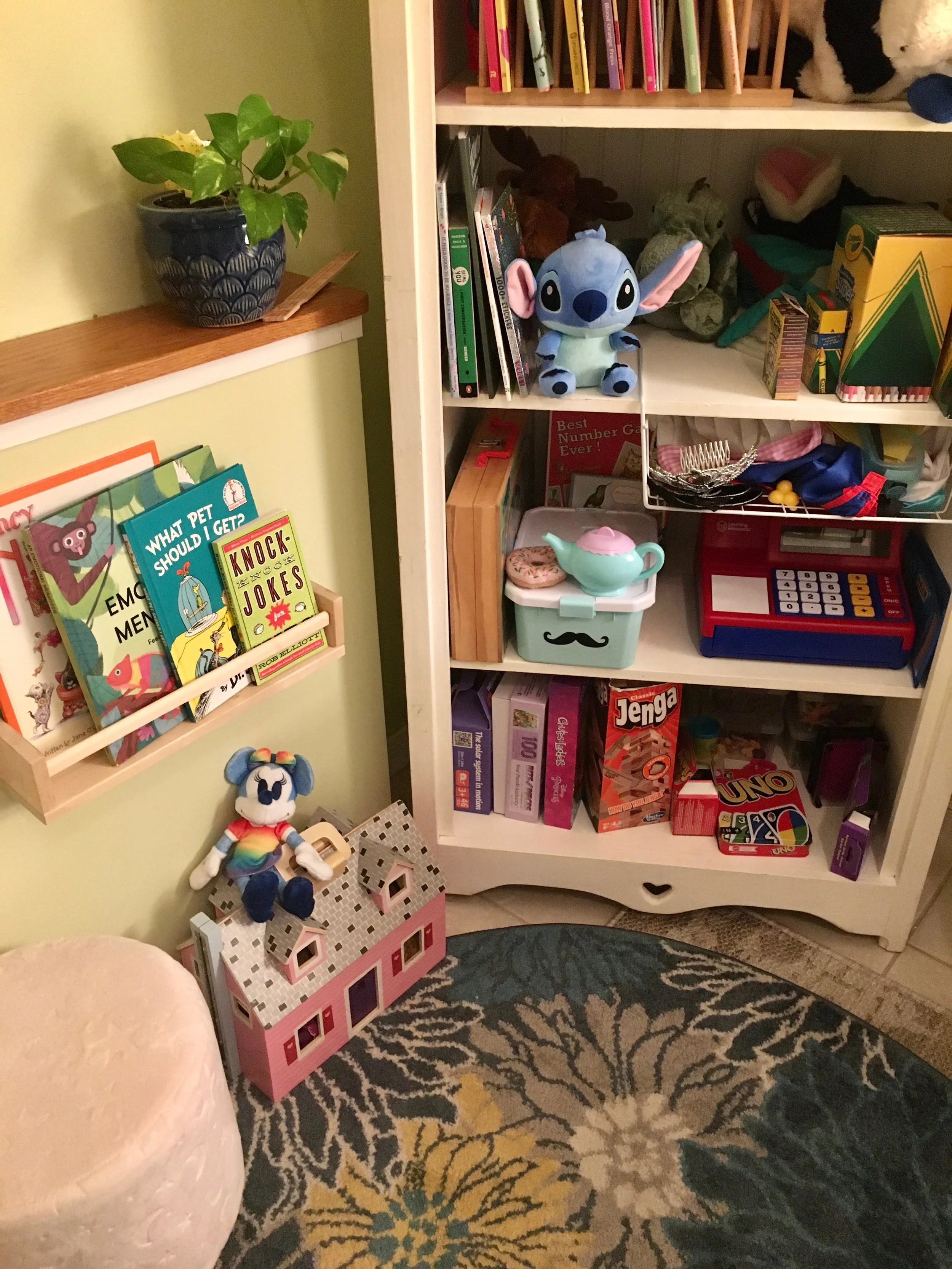What is Play Therapy?
Do you remember being a child and playing games?
I remember being in elementary school and playing games with my brother. He had toy cars and loved to build elaborate race tracks and as the younger sibling I was enlisted in his play. I added my personal spin by convincing him to let me give the cars a makeover. This collaborative game looked like a silly car wash in which he was racing his cars and I was playing next to him washing each one after their race in a little bowl, drying them off, rubbing scented lotion on them, and lovingly placing heart stickers on the cars before giving them back to him for another race. This type of play might seem silly and cute, but it also served many emotional purposes. We were demonstrating compromise, collaboration, creativity, and self-expression. It also was a lesson in being a team player as the younger sibling and leadership as the older sibling. Each of us made compromises and choices along the way similar to the way adults navigate relationships. All of this was done innately.
I share this example, to illustrate the way in which children think. Children naturally understand the world through play. It is their language. They use symbols and games to communicate and experience a sense of freedom and creativity. Play is a process that helps them learn skills, make sense of their environment, and learn about relationships. They are not able to verbalize all that they are doing and they may not have the words to describe why things hurt or help them. Their minds are still learning those words and that is where play therapy comes in.
Play therapy is widely recognized as one of the most effective methods of treatment for children struggling with mental health issues.
Child-centered play therapy, the theory I primarily draw from as a therapist, provides children with a safe space to express their emotions, process their experiences, and make sense of the world around them. In this therapeutic environment, play therapists create acceptance and support, offering carefully selected toys, games, and art supplies. Through free play, role-playing, storytelling, and creative expression, children engage in the therapeutic process while the therapist observes and interprets their behaviors and emotions.
The toys used by play therapists are tools of the trade, each serving a unique purpose. Art supplies, for example, help children generate new ideas, creative solutions, and visualize the future. Toys like dolls, play money, and costumes enable children to create make-believe situations that explore their emotional world and resolve feelings. Sensory toys like kinetic sand, pop-its, and fidgets help kids ease anxiety and self-soothe. Each toy has a purpose and the play therapist pays close attention to the child in order to respond in an understanding and empathic way. The therapist reflects back their feelings and thoughts through the child’s own games, helping them gain awareness and develop emotional communication skills.
The play therapist also helps children set limits, learn self-control, and respect for others. While the child has autonomy within the play session, clear boundaries are established to ensure safety and provide structure. This structure allows the child to test limits in a safe environment and receive immediate feedback on their behaviors.
Play therapy is highly effective for children experiencing emotional or behavioral difficulties, such as anxiety, depression, trauma, grief, divorce, or social challenges. Through play, children can explore and resolve conflicts, develop problem-solving skills, enhance self-esteem, and build healthier coping mechanisms. It is also suitable for individuals with developmental delays, autism spectrum disorders, or other special needs, offering a safe and inclusive space for self-expression and growth.
Moreover, play therapy is not limited to children alone. Its principles and techniques can be adapted to benefit adults, particularly those recovering from childhood trauma. Traditional talk therapy may not fully address deep emotional wounds caused by trauma. In adult play therapy, individuals engage in forms of expressive play, such as sand tray therapy and art therapy. By immersing themselves in these playful activities, adults can access emotions, memories, and trauma-related experiences that may have remained buried or inaccessible. Not all of our memories are verbal and visual communication can help adults access non-verbal memories. Play therapy provides a guided exploration, enabling individuals to process and reframe these experiences, fostering healing, resilience, and personal growth.
From its origins to its modern adaptation for trauma healing in adults, play therapy continues to transform lives. It is a powerful therapeutic approach that transcends age, offering benefits for emotional healing and growth. Embracing the inherent language of play, individuals of all ages can embark on a journey of self-discovery, self-expression, and healing.
If you or your loved ones are seeking a therapeutic path that combines creativity, empathy, and the power of play, consider exploring the transformative realm of play therapy. Let the healing and growth begin.
Note: This blog post is for informational purposes only.
References:
Axline, V. M. (2013). Dibs in Search of Self: The Renowned, Deeply Moving Story of an Emotionally Lost Child Who Found His Way Back. Ballantine Books.
Bhatti, K., & Haque, A. (2020). Sand Tray Therapy for Healing Trauma in Adults: A Review of Empirical Literature. Journal of Creativity in Mental Health, 15(1), 58-72. doi: 10.1080/15401383.2019.1600382
Brooke, S. L., & Ander, C. (2016). Sandtray Therapy with Trauma-Exposed Children: A Three-Part Study Examining Effects on Posttraumatic Stress Symptoms, Fantasy Play Themes, and Parent-Child Interaction. Journal of Child and Family Studies, 25(2), 516-526. doi: 10.1007/s10826-015-0233-5

